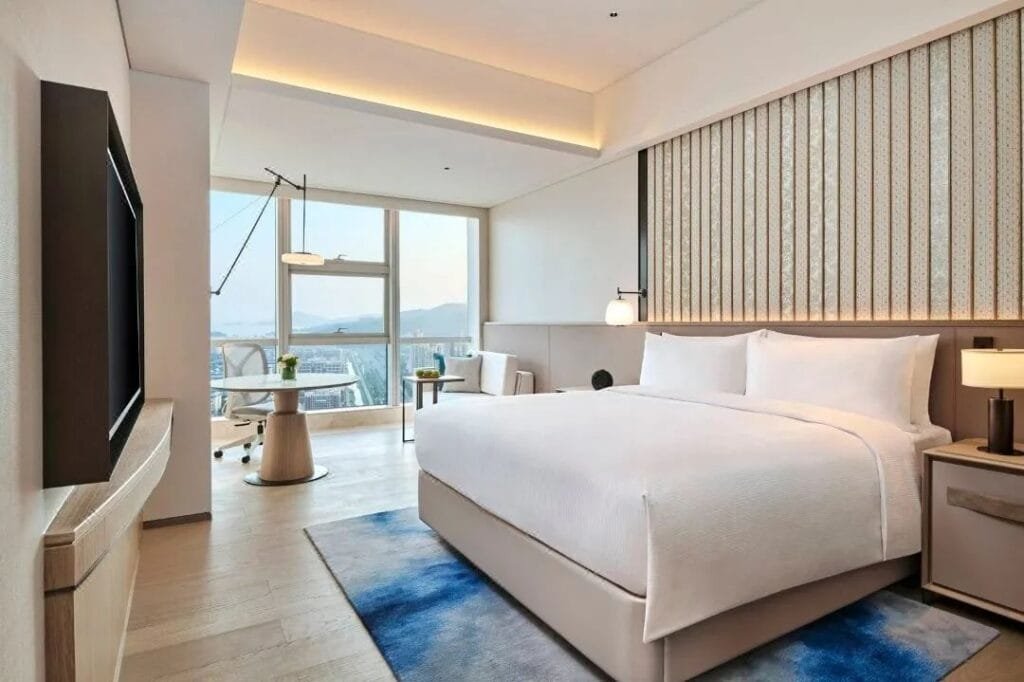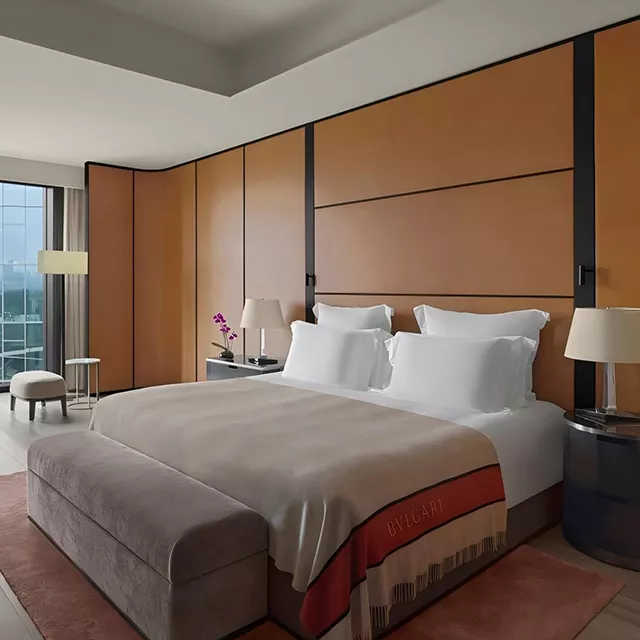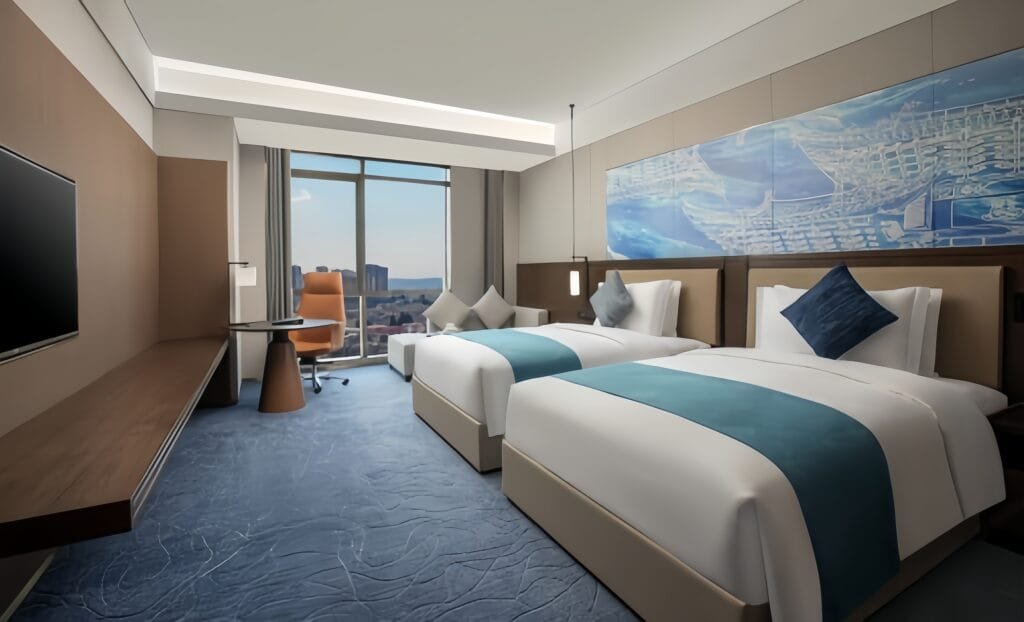
Did you know that 97% of hotel guests consider mattress quality the most important factor in their overall satisfaction rating? Yet, many hoteliers struggle to navigate the complex world of hotel mattresses, often making costly decisions that impact both guest comfort and operational efficiency.
The hospitality industry has evolved dramatically in recent years, with guests becoming increasingly discerning about sleep quality during their travels. Understanding the different hotel mattress types available today is crucial for creating memorable guest experiences while maintaining profitable operations.
This comprehensive guide explores the essential aspects of hotel mattress selection, from traditional innerspring systems to cutting-edge hybrid technologies. You’ll discover how different mattress types affect guest satisfaction, operational costs, and your property’s competitive positioning in today’s demanding hospitality market.
Understanding Hotel Mattress Categories and Their Applications
The modern hotel mattress landscape encompasses several distinct categories, each designed to meet specific guest needs and operational requirements. Hotel mattress types have evolved significantly from the basic innerspring models of decades past, now incorporating advanced materials and technologies that deliver superior comfort and durability.
Innerspring mattresses remain the most widely used option in the hospitality industry, accounting for approximately 60% of all hotel installations. These traditional systems feature steel coil construction with various comfort layers, offering reliable support and familiar feel that appeals to a broad range of guests. The primary advantage of innerspring systems lies in their proven durability and cost-effectiveness, making them ideal for properties with moderate budgets and high guest turnover.
Memory foam mattresses have gained substantial traction in luxury and boutique properties, representing roughly 25% of the current hotel mattress market. These viscoelastic systems conform to individual body contours, providing pressure relief and motion isolation that enhances sleep quality. Memory foam technology particularly benefits guests with joint issues or sleep disorders, though some guests may find the slower response time and heat retention less appealing.
Hybrid mattresses combine innerspring support cores with memory foam or latex comfort layers, creating a balanced sleep experience that addresses the limitations of single-material systems. This category has experienced rapid growth, now representing approximately 15% of hotel installations, particularly in upscale properties seeking to differentiate their guest experience.
Latex mattresses occupy a smaller but growing segment of the hotel market, favored for their natural materials and exceptional durability. These systems offer responsive support with excellent temperature regulation, though higher initial costs limit their adoption primarily to eco-conscious properties and luxury establishments.
The Hotel Mattress Comparison by Category table below illustrates key characteristics across different mattress types:
| Mattress Type | Average Lifespan | Guest Preference Rating | Initial Investment | Maintenance Requirements |
|---|---|---|---|---|
| Innerspring | 7-10 years | 7.2/10 | Low-Moderate | Standard |
| Memory Foam | 8-12 years | 8.1/10 | Moderate-High | Low |
| Hybrid | 9-13 years | 8.4/10 | High | Moderate |
| Latex | 12-15 years | 7.8/10 | Very High | Very Low |
Property size and guest demographics significantly influence mattress selection decisions. Extended-stay hotels often prioritize durability and consistent comfort, leading many to choose high-quality innerspring or hybrid systems. Business hotels typically focus on motion isolation and pressure relief to ensure restful sleep for frequently traveling executives, making memory foam and hybrid options attractive choices.
Resort properties face unique challenges, requiring mattresses that perform well in humid conditions while maintaining guest comfort across diverse body types and sleep preferences. Latex and high-quality hybrid systems often excel in these environments due to their superior temperature regulation and durability characteristics.
The relationship between mattress type and guest satisfaction extends beyond immediate comfort to encompass factors such as sleep quality, morning stiffness, and overall stay experience. Properties that invest in appropriate mattress technologies typically see measurable improvements in guest review scores, repeat bookings, and positive word-of-mouth recommendations.
Understanding these fundamental categories provides the foundation for making informed decisions about hotel mattress investments, whether you’re opening a new property or upgrading existing accommodations to meet evolving guest expectations.
Firmness Levels and Guest Preference Patterns
Mattress firmness represents one of the most critical factors in guest satisfaction, yet it remains one of the most challenging aspects for hoteliers to optimize. The hospitality industry typically categorizes firmness using a scale from 1 to 10, where 1 represents extremely soft and 10 indicates extremely firm. Most successful hotels target the medium-firm range of 5.5 to 7, which accommodates the broadest spectrum of guest preferences.
Research conducted across major hotel chains reveals that 68% of guests prefer medium-firm mattresses when staying in hotels, significantly higher than the 52% preference rate observed in residential settings. This difference stems from several factors: hotel guests often sleep in unfamiliar environments, may experience travel-related stress, and frequently share beds with partners who have different firmness preferences.
Soft mattresses (firmness levels 3-4) appeal primarily to side sleepers and guests who prefer a more enveloping sleep experience. However, hotels must consider that soft surfaces may not provide adequate support for heavier guests and can lead to premature sagging, resulting in higher replacement costs and potential guest complaints about back discomfort.
Medium mattresses (firmness levels 5-6) offer versatility that makes them popular choices for many hotel properties. These systems provide sufficient contouring for pressure relief while maintaining enough support for various sleep positions. The balanced feel reduces the likelihood of guest complaints while keeping replacement cycles reasonable.
Medium-firm mattresses (firmness levels 6-7) represent the sweet spot for most hotel applications. This firmness range provides excellent support for back and stomach sleepers while still accommodating side sleepers reasonably well. The firmer support structure typically enhances mattress longevity, making it an economically sound choice for properties with budget constraints.
Firm mattresses (firmness levels 8-9) work well in specific market segments, particularly business hotels catering to guests who prioritize spinal alignment and prefer more supportive sleep surfaces. However, the narrow appeal of very firm mattresses can lead to guest dissatisfaction among those accustomed to softer surfaces.
The Guest Preference Distribution by Property Type table demonstrates how firmness preferences vary across different hospitality segments:
| Property Type | Soft (3-4) | Medium (5-6) | Medium-Firm (6-7) | Firm (8-9) | Satisfaction Score |
|---|---|---|---|---|---|
| Luxury Hotels | 15% | 35% | 40% | 10% | 8.7/10 |
| Business Hotels | 8% | 25% | 52% | 15% | 8.4/10 |
| Extended Stay | 12% | 30% | 45% | 13% | 8.2/10 |
| Budget Properties | 10% | 45% | 35% | 10% | 7.8/10 |
| Resort Hotels | 18% | 38% | 32% | 12% | 8.5/10 |
Geographic and cultural factors also influence firmness preferences, requiring hoteliers to consider their primary guest demographics. International travelers from European markets often prefer firmer sleeping surfaces compared to North American guests, while Asian travelers may have different expectations based on traditional bedding customs in their home countries.
Seasonal variations in guest preferences present additional complexity for hotel operators. Business travelers during peak conference seasons may prefer firmer support for better sleep recovery, while leisure travelers might favor softer comfort during vacation periods. Some properties address this challenge by offering pillow-top options that allow guests to adjust surface feel without changing the underlying support structure.
The relationship between firmness and sleep quality extends beyond subjective preference to measurable health outcomes. Medium-firm mattresses consistently demonstrate superior performance in reducing morning back pain and improving sleep efficiency ratings among hotel guests, leading many properties to standardize on firmness levels between 6 and 7.
Dual-firmness solutions represent an emerging trend in luxury hospitality, where properties offer mattresses with different firmness levels on each side of the bed. While this approach can enhance guest satisfaction, it significantly increases inventory complexity and replacement costs, making it viable primarily for high-end properties with strong profit margins.
Understanding firmness preferences enables hoteliers to make strategic decisions that balance guest satisfaction with operational efficiency, ultimately contributing to improved review scores and increased profitability across all property segments.

Advanced Materials Technology in Hotel Mattresses
The evolution of mattress materials technology has revolutionized the hospitality industry’s approach to guest comfort and operational efficiency. Modern hotel mattresses incorporate sophisticated materials engineered specifically to address the unique challenges of commercial hospitality environments, including high usage frequency, diverse guest body types, and strict durability requirements.
Gel-infused memory foam represents one of the most significant advances in hotel mattress technology. This material addresses the primary complaint about traditional memory foam—heat retention—by incorporating cooling gel particles that help regulate surface temperature. Properties using gel-infused systems report 23% fewer guest complaints about sleeping too warm, particularly important in warmer climates or rooms with limited climate control options.
Copper-infused foam has gained attention for its antimicrobial properties, which can help maintain mattress hygiene in high-turnover environments. The copper particles naturally resist bacteria and odor formation, extending the effective lifespan of mattresses while reducing deep cleaning requirements. Several major hotel chains have begun specifying copper-infused comfort layers as standard equipment in their renovation programs.
Plant-based foam alternatives offer environmental benefits while maintaining comfort performance comparable to petroleum-based materials. These bio-foams typically provide better temperature regulation and faster response times than traditional memory foam, making them attractive options for properties pursuing sustainability certifications or appealing to environmentally conscious guests.
Micro-coil systems represent an innovative approach to combining the benefits of innerspring support with the pressure relief of foam materials. These miniature spring units, typically arranged in comfort layers above traditional coil cores, provide enhanced contouring and improved motion isolation. The technology has proven particularly effective in luxury properties where guest comfort expectations are elevated.
Phase-change materials (PCMs) incorporate advanced thermal regulation technology that actively manages surface temperature by absorbing and releasing heat as needed. While still emerging in the hotel market, early adopters report significant improvements in guest sleep quality scores, particularly among business travelers who frequently experience sleep disruption from temperature fluctuations.
The Advanced Materials Performance Comparison table highlights key characteristics of modern mattress technologies:
| Material Technology | Temperature Regulation | Durability Rating | Pressure Relief | Motion Isolation | Cost Factor |
|---|---|---|---|---|---|
| Gel-Infused Foam | Excellent | Good | Excellent | Excellent | Moderate |
| Copper-Infused Foam | Very Good | Excellent | Very Good | Very Good | High |
| Plant-Based Foam | Good | Good | Good | Good | Moderate |
| Micro-Coil Systems | Good | Excellent | Excellent | Good | High |
| Phase-Change Materials | Outstanding | Good | Good | Good | Very High |
Zoned support technology customizes firmness and support characteristics across different areas of the mattress, providing targeted comfort for specific body regions. This approach typically features firmer support in the core body area while offering softer contouring for hips and shoulders. Luxury hotels implementing zoned support systems report 15% higher guest satisfaction scores related to sleep comfort.
Natural latex has experienced renewed interest as hotels seek sustainable and hypoallergenic options. Modern latex processing techniques have eliminated many of the traditional concerns about odor and off-gassing while maintaining the material’s inherent benefits of durability, temperature regulation, and responsive support. Organic and eco-certified latex options appeal particularly to boutique properties and wellness-focused resorts.
Hybrid construction techniques continue to evolve, with manufacturers developing increasingly sophisticated combinations of materials to optimize specific performance characteristics. Advanced hybrid systems might incorporate multiple foam densities, micro-coils, latex layers, and cooling technologies within a single mattress design, creating customized sleep experiences that address diverse guest needs.
The integration of smart materials represents the cutting edge of hotel mattress technology. These advanced systems can monitor sleep patterns, adjust firmness automatically, or provide real-time temperature control based on individual guest preferences. While still in early adoption phases, smart mattress technology promises to revolutionize the hospitality guest experience over the coming decade.
Quality control standards for advanced materials require careful evaluation during the procurement process. Hotels must verify that new technologies maintain performance characteristics throughout their expected lifespan, particularly important given the high usage rates typical in commercial hospitality environments.
Understanding these material innovations enables hoteliers to make informed investment decisions that enhance guest satisfaction while optimizing long-term operational costs and maintaining competitive advantages in increasingly demanding hospitality markets.
Size Standards and Room Configuration Strategies
Hotel mattress sizing extends far beyond simple dimensional specifications to encompass complex strategic decisions that impact guest satisfaction, operational efficiency, and revenue optimization. The hospitality industry has developed specialized sizing standards that differ significantly from residential markets, reflecting the unique requirements of commercial accommodation environments.
Standard hotel queen mattresses typically measure 60 inches by 80 inches, identical to residential specifications, but hotel versions feature enhanced edge support and reinforced construction to withstand commercial usage patterns. The queen size represents the most popular choice across all hotel segments, accounting for approximately 65% of all installations due to its optimal balance of guest comfort and space efficiency.
Hotel king mattresses measure 76 inches by 80 inches in standard configuration, with California king options (72 inches by 84 inches) gaining popularity in luxury properties catering to taller guests. King-size installations require careful room planning to maintain adequate walking space and furniture placement, typically necessitating rooms of at least 320 square feet for optimal guest experience.
Double or full-size mattresses at 54 inches by 76 inches continue to serve important roles in specific market segments, particularly budget properties and rooms designed for single occupancy. While guest preference surveys consistently favor larger mattresses, double-size options remain viable for properties where space constraints or cost considerations take priority.
Twin mattress configurations (39 inches by 76 inches) appear primarily in extended-stay properties, hostels, and rooms designed for business travelers who prioritize workspace over sleeping area. Some properties offer convertible twin arrangements that can be configured as either two separate beds or pushed together to create a larger sleeping surface.

The Hotel Mattress Size Distribution by Property Segment table illustrates current industry trends:
| Property Type | Twin (%) | Double (%) | Queen (%) | King (%) | California King (%) |
|---|---|---|---|---|---|
| Luxury Hotels | 2% | 8% | 55% | 30% | 5% |
| Business Hotels | 5% | 15% | 70% | 10% | 0% |
| Extended Stay | 15% | 20% | 60% | 5% | 0% |
| Budget Properties | 8% | 35% | 52% | 5% | 0% |
| Resort Hotels | 3% | 5% | 60% | 27% | 5% |
Room configuration strategies must account for mattress size selection impact on overall space utilization and guest experience. Queen-size installations typically allow for optimal furniture placement while maintaining comfortable traffic flow, making them ideal for standard hotel rooms ranging from 280 to 350 square feet.
Revenue management implications of mattress sizing decisions extend beyond initial procurement costs to encompass ongoing operational considerations. Larger mattresses generally command higher room rates but also require larger rooms, more expensive linens, and increased housekeeping time, affecting overall profitability calculations.
Accessibility compliance requirements influence sizing decisions for properties subject to Americans with Disabilities Act regulations. Accessible rooms often specify queen or king mattresses to facilitate easier transfers for guests with mobility limitations, while maintaining adequate clearance around the bed for wheelchair navigation.
International market considerations require understanding of regional preferences and standard practices. European hotels often feature smaller mattress sizes than their American counterparts, while Asian markets may have different expectations based on traditional sleeping arrangements and cultural preferences.
Split-size configurations offer innovative solutions for properties seeking to maximize flexibility while controlling costs. These systems feature two separate mattresses on a shared foundation, allowing for different firmness levels or easier replacement of individual components as needed.
Custom sizing options have become increasingly available from commercial mattress manufacturers, enabling properties to optimize their specific room configurations. Custom dimensions typically require longer lead times and higher costs but can provide competitive advantages in unique architectural spaces or specialized market segments.
Bedding and linen considerations significantly impact the total cost of ownership for different mattress sizes. Larger mattresses require more expensive sheets, blankets, and protective covers, while also increasing laundry costs and storage requirements for housekeeping operations.
Furniture integration strategies must account for mattress size selection to ensure cohesive room design and optimal space utilization. King-size installations may require specialized bed frames or platforms to maintain structural integrity while supporting the additional weight and size requirements.
Understanding these sizing dynamics enables hoteliers to make strategic decisions that balance guest expectations with operational realities, ultimately contributing to improved satisfaction scores and enhanced profitability across diverse property types and market segments.
Durability, Maintenance, and Cost Management
Mattress longevity in hotel environments presents unique challenges that extend far beyond residential usage patterns. Commercial hospitality applications typically expose mattresses to 300-400% higher usage rates than home environments, with high-occupancy properties potentially seeing daily use for months at a time. Understanding durability factors and implementing effective maintenance strategies directly impacts both guest satisfaction and operational profitability.
Commercial-grade construction standards for hotel mattresses incorporate reinforced edge systems, higher-density core materials, and enhanced stitching techniques designed to withstand intensive usage. Quality hotel mattresses feature double-sided construction that allows for periodic rotation, effectively doubling the usable lifespan compared to single-sided residential models.
Mattress protectors and encasements represent the first line of defense in preserving mattress integrity and extending operational life. High-quality waterproof protectors prevent liquid damage, staining, and bacterial growth while maintaining breathability essential for guest comfort. Properties implementing comprehensive protection systems report 40-60% longer mattress lifespans compared to unprotected installations.
Preventive maintenance protocols require systematic approaches to mattress care that balance preservation with operational efficiency. Regular rotation schedules, typically quarterly for innerspring systems and bi-annually for memory foam mattresses, help ensure even wear patterns and maintain consistent support characteristics throughout the mattress lifespan.
Deep cleaning procedures extend beyond routine housekeeping to include periodic professional cleaning, sanitization, and inspection services. Many properties schedule annual deep cleaning using specialized equipment and techniques that remove embedded contaminants while preserving mattress materials and structural integrity.
The Mattress Lifecycle Cost Analysis table demonstrates the economic impact of different quality levels and maintenance approaches:
| Quality Level | Initial Cost | Expected Lifespan | Annual Maintenance | Replacement Frequency | Total 10-Year Cost |
|---|---|---|---|---|---|
| Budget Grade | $300 | 4-5 years | $25 | Every 4 years | $1,000 |
| Mid-Range | $600 | 6-8 years | $35 | Every 6 years | $1,420 |
| Premium Grade | $1,200 | 8-12 years | $50 | Every 10 years | $1,700 |
| Luxury Grade | $2,000 | 10-15 years | $75 | Every 12 years | $2,750 |
Warranty considerations play crucial roles in mattress investment decisions, with commercial warranties typically offering different terms than residential counterparts. Hotel-specific warranties often include prorated replacement schedules, specific usage clause provisions, and requirements for documented maintenance compliance to maintain coverage validity.
Stain and odor management requires immediate response protocols to prevent permanent damage and ensure guest satisfaction. Professional-grade spot cleaning solutions, enzyme-based treatments for organic stains, and ozone treatment for odor elimination help maintain mattress condition between deep cleaning cycles.
Inventory management strategies for mattress replacement help properties maintain consistent guest experiences while optimizing procurement costs. Many successful hotels implement staged replacement programs that rotate inventory based on usage patterns, room occupancy rates, and seasonal demand fluctuations.
Quality monitoring systems track mattress condition through regular inspections, guest feedback analysis, and housekeeping reports. Properties using systematic monitoring approaches can identify declining mattresses before guest complaints occur, maintaining high satisfaction scores while optimizing replacement timing.
Disposal and recycling considerations impact both environmental responsibility and cost management. Many mattress manufacturers now offer take-back programs that handle disposal while recovering materials for recycling, reducing landfill waste and potentially providing credits toward new purchases.
Bulk purchasing strategies enable properties to negotiate better pricing while ensuring consistent quality across all rooms. Group purchasing organizations and hotel chain consortiums often provide access to preferred vendor programs that combine volume discounts with extended warranty coverage and maintenance support services.
Performance tracking metrics help properties evaluate mattress investment effectiveness through quantifiable measures including guest satisfaction scores, replacement frequency, maintenance costs, and revenue per available room correlations. Successful hotels typically see 0.2-0.3 point improvements in overall guest satisfaction scores following strategic mattress upgrades.
Technology integration for maintenance management includes digital tracking systems that monitor mattress age, maintenance history, and replacement schedules. Advanced properties use property management system integration to automatically schedule maintenance activities and track warranty coverage across their entire inventory.
Understanding these durability and maintenance factors enables hoteliers to make informed investment decisions that balance upfront costs with long-term operational efficiency, ultimately contributing to improved guest satisfaction and enhanced profitability through strategic mattress management approaches.
Conclusion
The strategic selection of hotel mattress types represents a critical investment decision that influences guest satisfaction, operational efficiency, and long-term profitability. As the hospitality industry continues to evolve, properties that understand the complex relationships between mattress technology, guest preferences, and operational requirements gain significant competitive advantages in increasingly demanding markets.
Modern hoteliers must navigate multiple considerations when selecting mattress systems, from understanding the fundamental differences between innerspring, memory foam, hybrid, and latex technologies to implementing appropriate firmness strategies that accommodate diverse guest preferences. The emergence of advanced materials technology including gel-infused foams, copper treatments, and phase-change materials offers new opportunities to enhance guest experiences while addressing traditional comfort challenges.
Size optimization strategies require careful balance between guest comfort expectations and operational realities, with queen-size mattresses continuing to dominate installations while king-size options gain popularity in luxury segments. Understanding how mattress sizing decisions impact room configuration, revenue management, and overall guest satisfaction enables properties to make strategic choices aligned with their market positioning and operational goals.
Durability and maintenance considerations directly impact the total cost of ownership for hotel mattress investments. Properties implementing comprehensive protection systems, preventive maintenance protocols, and strategic replacement programs typically achieve superior long-term value while maintaining consistently high guest satisfaction scores.
The hospitality industry’s continued focus on sleep quality as a key differentiator suggests that mattress technology will remain an essential competitive factor. Properties investing in appropriate mattress systems today position themselves for sustained success in markets where guest expectations continue to rise and sleep quality increasingly influences booking decisions and brand loyalty.
Frequently Asked Questions
How often should hotels replace their mattresses?
Hotel mattress replacement frequency depends on several factors including quality level, usage intensity, and maintenance protocols. Premium-grade mattresses with comprehensive protection systems typically last 8-12 years in standard hotel environments, while budget-grade options may require replacement every 4-5 years. High-occupancy properties with daily usage should inspect mattresses annually and implement replacement schedules based on condition assessments rather than arbitrary timelines. Properties using systematic maintenance approaches including regular rotation, professional cleaning, and quality protectors can extend mattress lifespans by 40-60% compared to reactive replacement strategies. The key is monitoring mattress condition through guest feedback, housekeeping reports, and physical inspections to identify declining performance before guest satisfaction suffers.
What mattress firmness level works best for most hotel guests?
Research across major hotel chains indicates that medium-firm mattresses with firmness ratings between 6-7 on a 10-point scale provide optimal guest satisfaction across diverse demographics. This firmness range accommodates approximately 68% of guest preferences while providing adequate support for various sleep positions and body types. Business hotels often lean toward slightly firmer options (6.5-7) to support guests recovering from travel stress, while resort properties may favor slightly softer configurations (5.5-6.5) for leisure travelers. The medium-firm range also offers practical advantages including better durability, reduced sagging potential, and lower complaint rates compared to very soft or very firm alternatives. Properties targeting international markets should consider regional preferences, with European guests often preferring firmer surfaces than North American travelers.
Are memory foam mattresses suitable for hotel use?
Memory foam mattresses can be excellent choices for hotels when properly specified for commercial applications. High-density memory foam systems (4+ pounds per cubic foot) provide exceptional pressure relief and motion isolation that enhances sleep quality, particularly beneficial for business travelers and guests with sleep sensitivity issues. However, hotels must address potential concerns including heat retention, slower response times, and higher initial costs.
How do hotel mattress sizes differ from residential mattresses?
While hotel mattress dimensions typically match residential standards, commercial hotel mattresses feature enhanced construction specifically designed for hospitality environments. Hotel mattresses include reinforced edge systems to prevent premature breakdown from sitting, higher-density core materials to withstand intensive usage, and often double-sided construction enabling rotation for extended lifespan.
What are the benefits of hybrid mattresses for hotels?
Hybrid mattresses combine innerspring support cores with comfort layers of memory foam, latex, or gel-infused materials, offering balanced performance that addresses limitations of single-material systems. For hotels, hybrids provide excellent motion isolation reducing partner disturbance, superior edge support for sitting and sleeping comfort, and temperature regulation that prevents heat retention issues common with all-foam systems.
How can hotels manage mattress costs while maintaining quality?
Effective hotel mattress cost management requires strategic approaches that balance initial investment with long-term operational value. Bulk purchasing through group buying organizations or chain partnerships can reduce per-unit costs by 20-30% while ensuring consistent quality across properties. Implementing comprehensive mattress protection systems including high-quality protectors and encasements extends lifespan significantly, improving total cost of ownership despite higher upfront investment.


